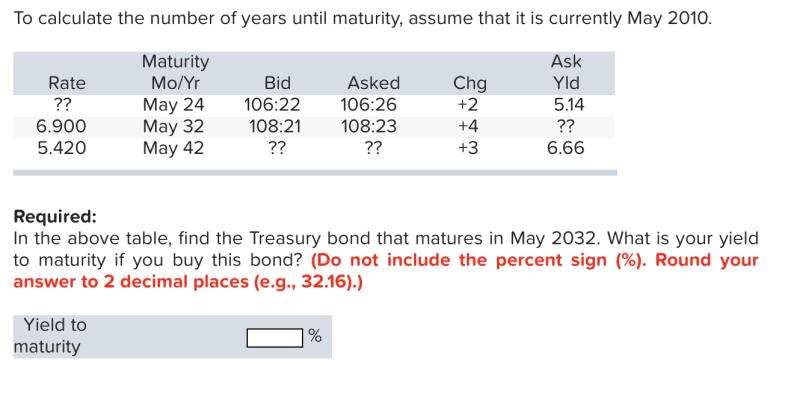How many days until maturity?
To determine the number of days until maturity for a financial instrument, you need to know the current date and the maturity date of the instrument. The formula for calculating the number of days until maturity is straightforward:
Here are the steps to calculate the number of days until maturity:
Identify the Maturity Date:
- Determine the maturity date of the financial instrument. This is the date on which the instrument expires or reaches the end of its term.
Identify the Current Date:
- Determine the current date. This is the date on which you are calculating the number of days until maturity.
Calculate the Days Until Maturity:
- Subtract the current date from the maturity date. The result will be the number of days until maturity.
It's important to note that the result may be positive, indicating the number of days remaining until maturity, or negative if the maturity date has already passed.
Example:Suppose a bond has a maturity date of March 1, 2024, and today's date is January 15, 2024. To calculate the number of days until maturity:
You would perform the subtraction to find the specific number of days until maturity.
Keep in mind that when calculating days until maturity, it's essential to consider the conventions used for counting days. Different financial instruments or markets may have different day-count conventions, such as actual/actual, 30/360, or actual/360. Always be aware of the specific conventions relevant to the instrument you are working with.
Days Until Maturity: A Key Measure in Financial Play
Days until maturity (DTM) is a simple yet potent concept in finance, providing a crucial piece of information for investors navigating the market. Let's explore its intricacies:
1. Counting Down to Payday:
DTM signifies the number of days remaining until the principal amount of a financial instrument becomes due and is repaid to the investor. This applies to:
- Bonds: Counting down to the redemption date, factoring in potential early call features.
- Loans and Mortgages: Tracking the remaining duration until final payment.
- Certificates of Deposit (CDs): Determining the date for receiving the principal and accrued interest.
- Options contracts: Identifying the expiration date when the option can be exercised.
2. Significance for Investors:
DTM plays a key role in several investment decisions and strategies:
- Interest Rate Risk: Shorter DTM means less exposure to potential interest rate changes, impacting bond prices.
- Liquidity Management: Knowing the timeframe for receiving investment funds helps plan for upcoming cash needs.
- Portfolio Rebalancing: DTM data aids in adjusting asset allocation and managing overall risk exposure.
- Investment Valuation: Short-term instruments with lower DTM may be valued differently than those with longer maturities.
3. Varied Calculations:
The method for calculating DTM depends on the instrument:
- Bonds: Subtract the settlement date from the maturity date. Consider adjustments for weekends and holidays.
- Loans and Mortgages: Use a loan amortization schedule or online calculators factoring in payment dates and early payment possibilities.
- CDs: Typically stated explicitly on the certificate or readily available from the issuer.
- Options: Subtract the trade date from the expiration date.
4. Timeframe Impact:
DTM influences investment decisions in various ways:
- Short-term investments: Offer immediate liquidity but potentially lower returns.
- Long-term investments: Can benefit from compounding but entail higher interest rate risk.
- Matching needs with maturities: Aligning DTM with future cash needs optimizes portfolio stability.
5. Online Resources:
Numerous online tools and resources can help calculate DTM:
- Financial websites and calculators: Offer convenient DTM calculations for various instruments.
- Brokerage platforms: Often provide built-in tools for portfolio asset maturity analysis.
- Spreadsheet software: Formulas can be used to track and calculate DTM for custom portfolios.
Remember:
Days until maturity is a simple metric with significant implications. By understanding its role and calculating it accurately, you can make informed investment decisions, manage risks effectively, and navigate the financial landscape with greater confidence. So, keep track of those ticking days and make them work for your financial goals!












